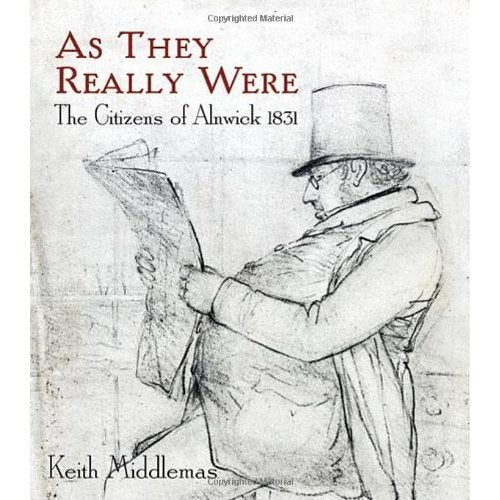As They Really Were: The Citizens of Alnwick 1831, by Keith Middlemas

Your support helps us to tell the story
From reproductive rights to climate change to Big Tech, The Independent is on the ground when the story is developing. Whether it's investigating the financials of Elon Musk's pro-Trump PAC or producing our latest documentary, 'The A Word', which shines a light on the American women fighting for reproductive rights, we know how important it is to parse out the facts from the messaging.
At such a critical moment in US history, we need reporters on the ground. Your donation allows us to keep sending journalists to speak to both sides of the story.
The Independent is trusted by Americans across the entire political spectrum. And unlike many other quality news outlets, we choose not to lock Americans out of our reporting and analysis with paywalls. We believe quality journalism should be available to everyone, paid for by those who can afford it.
Your support makes all the difference.What’s so special about Alnwick? The Northumbrian dormitory town about 30 miles outside Newcastle is home to a medieval castle, a Morrisons and a population of around 8,000. It also happens to be the home town of University of Sussex History professor Keith Middlemas and local artist Percy Forster.
These two sons of Alnwick reached professional maturity in the 1830s and 1960s respectively, but they haven’t let the trifling matter of an intervening century or so, prevent this publishing collaboration.
A battered, blue volume lay undisturbed for some 150 years in the Alnwick solicitors’ office where Middlemas’s grandfather worked before he inherited it in the early 1980s. Middlemas was charmed by the 117 portraits within, but it remained shelved a further thirty years while he acquired the erudition on display in As They Really Were. Under chapter headings including ‘Inheritance And Tradition’, ‘The Educated Mind’ and ‘The Balance of Power’, Middlemas introduces us to these citizens of Alnwick, as drawn by Forster around 1831, but does the artist’s work have any relevance beyond enjoyable local sentiment?
The character sketch was a long-established form, by the time Forster put pencil to paper. Theophrastus wrote The Characters around the 4th century BC, John Aubrey compiled his Brief Lives in the 17th century, and William Hogarth painted his gin-ruined mothers and rosy-cheeked beer drinkers in the 18th century.
Like these others, Forster offers us a cast of characters typical of their time and place and representative of different strata of society. There are successful merchants sketched in profile – all the better to admire their impressive waist-coated girths. There are also practitioners of exotic-sounding trades; flax dressers, tallow chandlers and ‘Tom the Cutter’, a glum, neckless man holding a brace of eels for sale. There are a few children and disappointingly few women, but then this too is revealing of the period.
What is also clear from Forster’s pictures is that these are not only ‘types’, but also his neighbours; real people who really existed. In an age obsessed with physiognomies and typologies, there is an unusual compassion to his work. As Middlemas puts it, “His lively, painless dissections have none of the static sadism of his immediate predecessors.” A few do look like cosy Dickensian caricatures, but most, like Billy Smith, his lips slightly parted in concentration as he reads reports of the markets at the Star Inn, are so life-like they could step off the page and into the 21st century.
If Forster’s skill highlights the timelessness of his subjects, it’s Middlemas’s job to relocate them in historical context. They might have lived at any time, but they lived in 1831 - six years before Queen Victoria ascended to the throne, a decade before the daguerreotype would begin to rival the portrait painter, and just year before – as every GCSE History student knows - the Reform Act would change British society forever. Yet with an eye for the details of everyday life, As They Really Were often hints at how far away these great moments of history must have seemed for an ordinary citizen in Alnwick.
Forster’s snapshot of history would be of natural interest to any local resident, but it’s Middlemas’ achievement that makes it fascinating for everyone else too. What’s so special about Alnwick? Nothing at all. And that’s just the point.
Join our commenting forum
Join thought-provoking conversations, follow other Independent readers and see their replies
Comments